Introduction: Why Vertical Farming is on the Rise
Why is the term “vertical farming” suddenly everywhere? From rooftops in Tokyo to shipping containers in New York, agriculture is moving upward—literally. But why is it suddenly becoming such a hot topic? In today’s era, where sustainability is more than just a buzzword, vertical farming is emerging as a smart response to shrinking arable land, rising urbanization, and climate instability. It’s more than a trend—it’s a revolution.
In a time when the global population is racing toward 10 billion and traditional farming faces water shortages, unpredictable weather, and space limitations, vertical farming offers precise control, year-round yield, and zero soil dependency. Not only does it maximize production in minimal space, but it also minimizes carbon footprint, making it an ideal solution for the eco-conscious generation.
In this blog, let’s dive deeper into the role, techniques, real-world examples, and benefits of vertical farming—especially in today’s fast-paced, urban world. As innovations in agri-tech accelerate, understanding your Freedom To Operate (FTO) becomes essential—ensuring your vertical farming solutions are scalable, market-ready, and legally sound without infringing existing patents.
The Role of Vertical Farming in Today’s Agriculture
Vertical farming is more than just stacking plants on shelves; it involves the art and science of cultivating crops in vertically stacked layers, typically in controlled indoor environments. Unlike traditional farming, this method is not dependent on weather or extensive farmland. Instead, it uses modern systems such as hydroponics, aeroponics, and aquaponics to feed nutrients directly to plants that do not require soil.
What Is It, Really?
At its core, vertical farming uses artificial lighting, climate control systems, and smart sensors to create a microclimate where plants grow faster, healthier, and more efficiently. It’s a closed-loop system, where water is recycled, and energy use is optimized. Many setups use LED grow lights, nutrient-rich solutions, and automation to monitor humidity, pH levels, and temperature.
Hydroponics & Aeroponics: Redefining How We Grow Our Food
- Hydroponics: Plants grow in a nutrient-rich water solution instead of soil. It uses 90% less water than conventional farming.
- Aeroponics: Plants are suspended in the air, and roots are misted with nutrients. It uses even less water than hydroponics and encourages rapid growth.
- Aquaponics: Combines fish farming (aquaculture) with hydroponics—fish waste provides nutrients for plants, and plants help clean the water.
These systems allow us to grow “after-less” crops—after less water, less land, less labor, and fewer chemicals.
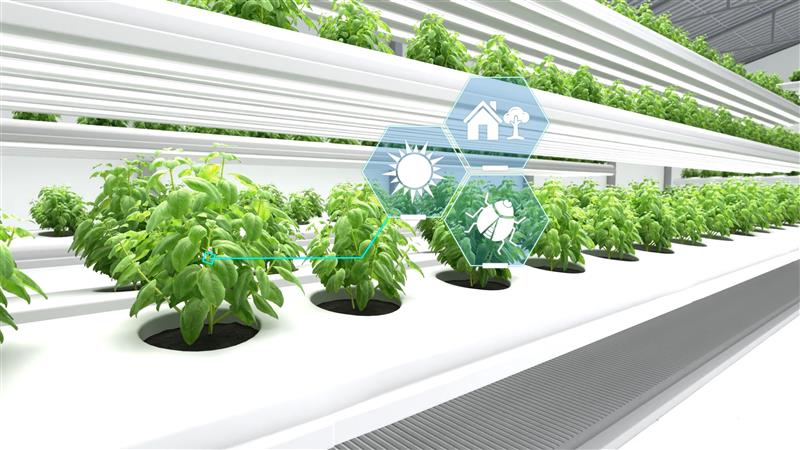
Real-Life Examples: Who Is Growing in the Future Right Now?
Innovative firms worldwide are showing that vertical farming is a viable business model.
- AeroFarms (USA) – Grows leafy greens in vertical towers with aeroponics, saving up to 95% water.
- Spread (Japan) – Uses robots in vertical farms to produce 30,000 heads of lettuce daily.
- Badia Farms (UAE) – Operates vertical farms in desert climates to grow microgreens indoors year-round.
What Can You Grow with Vertical Farming?
Vertical farming supports a wide variety of fast-growing, small-footprint crops—perfectly suited for controlled environments and rapid harvest cycles. To further optimize crop selection, Biological Sequence Search tools are now being explored to identify plant traits at the genetic level. This allows growers to select varieties that thrive best in vertical systems, enhancing yield, nutrition, and resource efficiency.
Not all crops are suitable for vertical setups—large fruiting plants like corn or melons are rarely grown in this way. But a wide variety of leafy greens, herbs, microgreens, and small vegetables thrive beautifully.
Here’s a simplified tabular comparison of vertical farming-friendly crops:
| Category | Examples | Best Technique | Harvest Cycle |
| Leafy Greens | Lettuce, Kale, Spinach | Hydroponics | 3–5 weeks |
| Herbs | Basil, Mint, Parsley | Aeroponics / Hydroponics | 3–4 weeks |
| Microgreens | Radish, Arugula, Sunflower Shoots | Hydroponics | 7–14 days |
| Fruiting Veggies | Cherry Tomato, Strawberries (limited) | Hybrid (with light) | 6–8 weeks |
| Edible Flowers | Nasturtium, Viola | Aeroponics | 4–6 weeks |
This controlled farming model ensures faster harvest cycles, consistency in taste, and higher nutritional value.
Why these crops? They grow fast, require minimal space, and have high market demand.
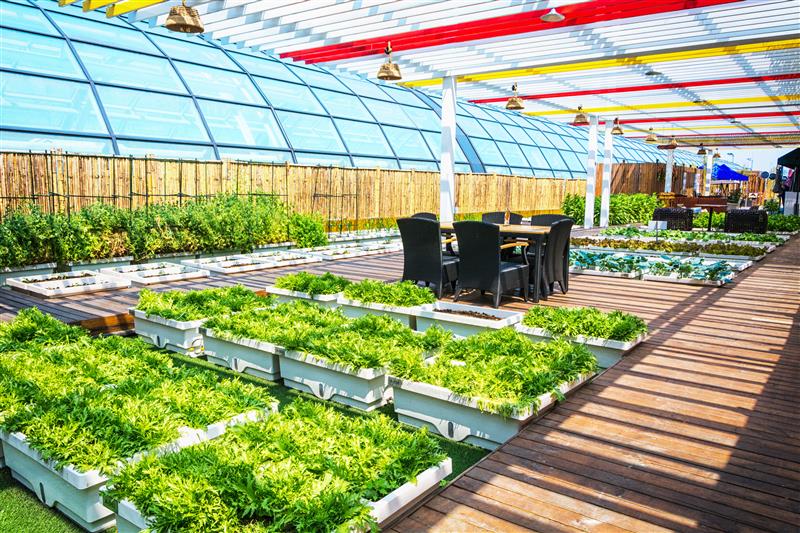
Benefits of Vertical Farming in Urban Spaces
Cities are concrete jungles—but now, rooftops, basements, and old warehouses are turning into green, living factories.
Here’s how vertical farming transforms urban life:
Climate-Independent Yield: Grow fresh produce all year round—no rain, drought, or pests to worry about. That means consistent pricing and no seasonal shortages.
Year-Round Crops: Vertical farming means no waiting for the right season. Crops grow 365 days a year, ensuring a consistent, reliable food supply.
Water Efficiency: It uses up to 95% less water than conventional farming by recycling and reusing water.
Zero Food Miles: Since it’s grown close to where it’s consumed, there’s no need for long-distance transportation—reducing carbon emissions and spoilage.
Pesticide-Free Produce: Controlled environments eliminate the need for harsh pesticides, leading to cleaner, safer food.
Space Optimization: A single vertical farm can grow 10x more crops in the same footprint as a traditional field.
Energy-Efficient Smart Systems: LEDs, AI-powered climate control, and IoT-based monitoring systems reduce resource waste and improve productivity.
Technologies Empowering Vertical Farming
To make vertical farming scalable and profitable, tech is the real backbone.
- IoT Sensors – These smart sensors monitor important characteristics such as humidity, pH levels, and light intensity in real time, allowing farmers to make quick, educated decisions that improve crop quality and save waste.
- AI and Machine Learning – AI models can now estimate harvest yields, autonomously change indoor temperatures, and optimise resource utilization, resulting in a genuinely intelligent and efficient vertical farming system.
- Automated Robotic Arms – Robotic arms automate repetitive operations such as seed planting, crop harvesting, and plant health checks, decreasing human labour while assuring consistency and precision across the farm.
- Blockchain – Blockchain enables complete transparency and traceability throughout the supply chain, from seed to store shelf, allowing consumers to trust the journey of their food and increasing brand accountability.
These technologies turn vertical farming into a smart, data-powered solution for tomorrow’s food security.
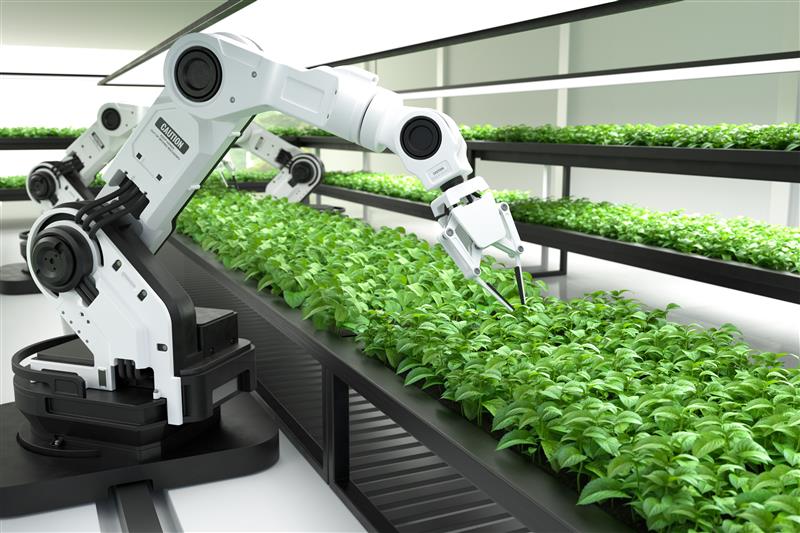
Challenges of Present Toxic Agriculture
Industrial farming may feed the world, but its hazardous practices are destroying the environment, deteriorating soil, and endangering human health at frightening rates.
- Chemical Overload: Excessive use of synthetic fertilizers and pesticides is polluting rivers and groundwater, harming aquatic ecosystems, and creating long-term health risks for nearby communities.
- Monocropping Crisis: Planting a single crop repeatedly drains essential nutrients from the soil, disrupts biodiversity, and invites pests—forcing even more chemical use in a vicious cycle.
- Water Waste: Traditional irrigation systems use vast amounts of freshwater inefficiently, often flooding fields and leading to evaporation losses—especially unsustainable in water-scarce regions.
- Carbon Emissions: From fuel-guzzling tractors to global food transport, industrial farming significantly contributes to greenhouse gas emissions and the worsening climate crisis.
- Soil Degradation: Heavy tilling and repeated chemical exposure reduce soil organic matter, making land less fertile and more prone to erosion and desertification.
- Genetic Uniformity: Over-reliance on genetically uniform crops reduces resilience, making entire harvests vulnerable to pests, diseases, and climate shifts—all at once.
- Loss of Local Knowledge: The rise of large-scale mechanized farming sidelines traditional, eco-friendly practices—disconnecting communities from their agricultural heritage and adaptive resilience methods.
Top Innovations Fueling the Rise of Eco-Friendly Farming
Precision Agriculture
Precision agriculture uses GPS, satellite imaging, and data analytics to apply just the right amount of water, fertilizer, or pesticide exactly where needed—no more, no less.
IoT-Enabled Farming – Real-Time Data from the Field
With IoT (Internet of Things), sensors in the soil, weather stations, and drones feed farmers real-time data on moisture, nutrients, and crop health.
Unmanned Aerial Vehicles (Drones) – Eyes in the Sky
Drones map fields, detect diseases, and even spray crops with precision, reducing manual labor and chemical usage.
Automated Robotics – From Seeding to Harvesting
Robotic arms and autonomous machines can plant, weed, and harvest with surgical precision—saving time and reducing human effort.
Satellite Farming – Monitoring from Space
High-resolution satellite imagery helps detect crop stress, pest outbreaks, and irrigation needs early—before yield is affected.
Vertical farming is transforming agriculture into a climate-smart, sustainable solution—especially in urban spaces across Tokyo, Dubai, London, and New York.
Below is a quick comparison of how it stacks up against traditional farming in terms of yield, efficiency, and environmental impact.
Comparison Table: Traditional vs. Eco-Friendly Vertical Farming
| Feature | Traditional Farming | Vertical Farming |
| Land Use | Extensive land required | Minimal – stacked growing systems |
| Water Use | High consumption | Up to 90% less water |
| Chemical Use | High pesticide and fertilizer use | Low or none (often pesticide-free) |
| Environmental Impact | Soil erosion, high emissions | Controlled, low-carbon footprint |
| Crop Yield per Sq. Ft. | Low | Extremely high |
| Seasonal Dependency | High – weather-dependent | None – year-round production |
| Local Supply Chain | Limited, long-distance transport | Hyper-local, grown near consumers |
Sustainability Benefits in Today’s Environment
As the planet warms and cities grow, farming must evolve. These sustainability benefits show how new methods are reshaping food without harming nature:
- Climate Resilience: Protected growing environments make crops immune to droughts, floods, and extreme temperature swings—ensuring year-round harvests.
- Energy Optimization: Solar panels, AI-driven climate systems, and energy-efficient LEDs drastically cut energy use while maximizing crop output.
- Biodiversity Protection: Since vertical farms don’t need forest clearing or large fields, they preserve natural habitats and protect biodiversity.
- Less Food Waste: Growing food closer to cities shortens supply chains, keeps produce fresher, and reduces spoilage at every step.
- Carbon Footprint Reduction: Controlled systems use less fuel, fewer trucks, and minimize emissions across the entire food supply chain.
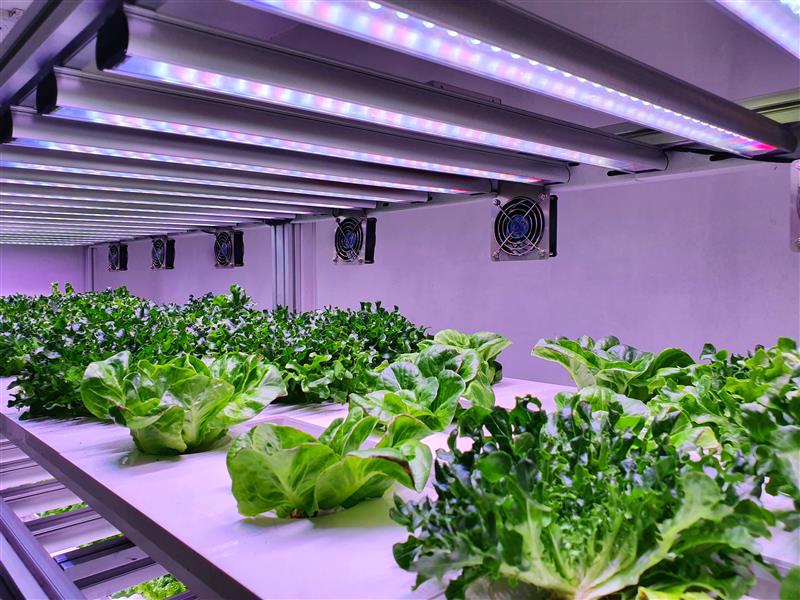
Market Outlook
Vertical farming is gaining traction as cities seek better, more space-efficient ways to grow food. With climate change and diminishing cropland, soil-free farming is rethinking agriculture.
Vertical farming is growing globally, according to Signicent Market Research, as stakeholders prioritise food security, sustainability, and technology-driven solutions for urban and indoor agriculture.
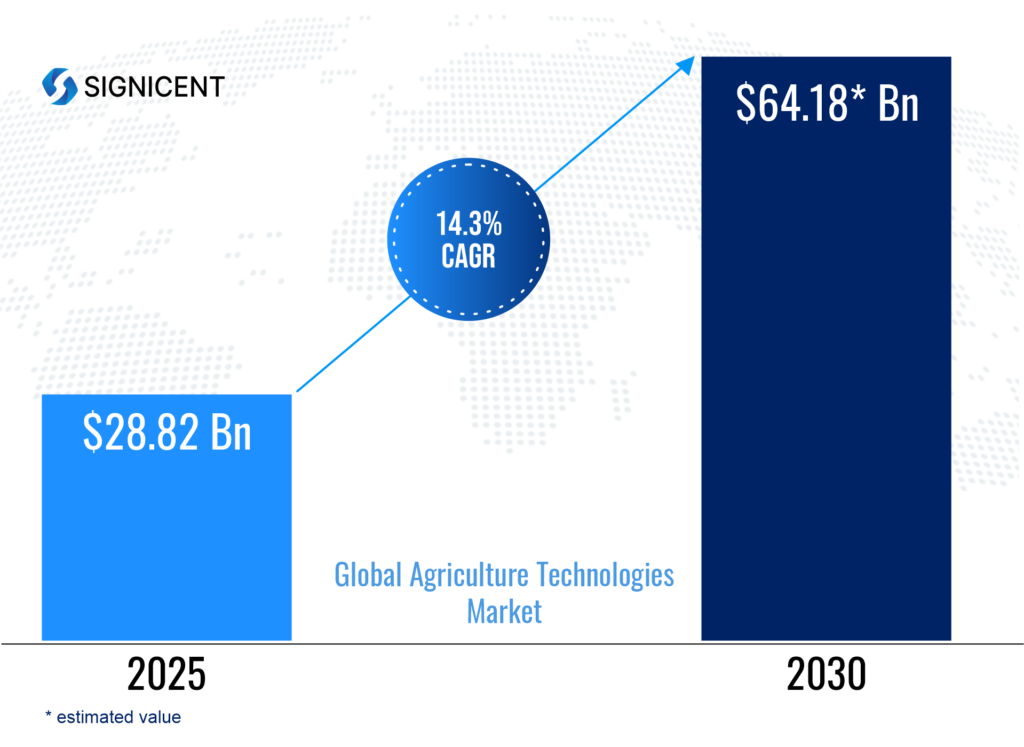
Leading Global Players in Vertical Farming
- AeroFarms
- Plenty Unlimited Inc.
- Bowery Farming
- Infarm
- Sky Greens
- Spread Co.
- Vertical Field
Signicent has been at the forefront of supporting agri-tech innovation by helping clients explore sustainable and smart farming solutions. Through technology scouting, landscape analysis, and sustainability mapping, we’ve enabled companies to adopt practices like vertical farming, precision agriculture, and IoT-enabled crop monitoring. In one project, Signicent assisted a farming solutions provider in integrating AI-based climate systems into indoor farms, improving crop yields and reducing energy waste. In another case, we helped a global agri-business identify sustainable water-recycling technologies, enhancing irrigation efficiency by over 80%.
Our Technology Gap Analysis reveals untapped opportunities in automated farming, controlled environment agriculture, and energy-efficient systems—helping organizations stay ahead in a competitive, sustainability-driven market.
If you’re looking for white space analysis or a custom agri-tech report, connect with Signicent for actionable insights and impactful innovation support.
Recently, signicent supported an agri-tech startup working with smallholder farmers in Asia and Africa to adopt modular vertical farming systems. The challenge? High cost and lack of training.
Our team delivered localized tech solutions, market insights, and a go-to-market strategy tailored to rural deployment. The result? Reduced cost barriers and a scalable, low-tech indoor farming model for remote regions.
Conclusion: What the Future Holds
The transition from conventional to vertical farming is not only a vision of the future; it is now the foundation of the resilient food systems of the future. In order to satisfy the demands of rapidly expanding urban populations, what was before based on soil and seasons is now being rebuilt through precision technology, smart settings, and climate-proof design.
At Signicent, we’ve seen how trailblazers are pushing the envelope by implementing data-driven monitoring, integrating AI-controlled ecosystems, and expanding eco-friendly and efficient hyper-local food production. Yes, there are still obstacles like energy consumption, initial costs, and scalability, but so is the worldwide push for safe, sustainable, and clean agriculture.
As vertical farming becomes more popular, from rooftops in New York to skyscrapers in Singapore, it’s changing more than simply the way we raise food. What is conceivable is being redefined. Vertical farming is a representation of more intelligent growth for a healthier planet through sustained innovation, audacious investment, and shared responsibility.
Frequently Asked Questions (FAQs) About Vertical Farming
1. What is vertical farming and how is it different from traditional farming?
It grows crops in stacked layers using soilless methods—indoor, controlled, space-efficient, and not dependent on weather or soil.
2. Can vertical farming solve food security issues in cities?
Yes, it ensures year-round fresh food, grown locally with fewer resources—reducing transport, spoilage, and reliance on external supply chains.
3. Is vertical farming environmentally sustainable long-term?
Definitely. It cuts water use by 90%, eliminates pesticides, reduces emissions, and when powered by renewables, becomes truly climate smart.
4. Which crops are best for vertical farming?
Leafy greens, herbs, strawberries, and microgreens thrive—fast-growing, compact, and perfect for limited space and short harvest cycles.
5. Is it affordable for small-scale farmers?
Initial costs are falling. With modular systems and guidance from Signicent, even small farms can adopt it affordably and effectively.
About Signicent LLP
We assist businesses globally in their technology innovations, R&D, new product development, patents, valuation, product commercialization & market research needs.
Services Offered:
- Patent Landscape
- Patent Portfolio Analysis
- Patent Invalidity Search
- Patent Licensing Services
- Freedom to operate (FTO)
- Chemical Structure Search
- Design Patent Search
- Technology Scouting
- Technology Landscape Analysis
- Technology gap analysis
- Technology Intelligence
- Market Research
- Bio Sequence Search
Elevate your Innovation and Research with Signicent’s cutting-edge approach to assist you with Technology and Market related matters alongside the IP aspect of the analysis.


